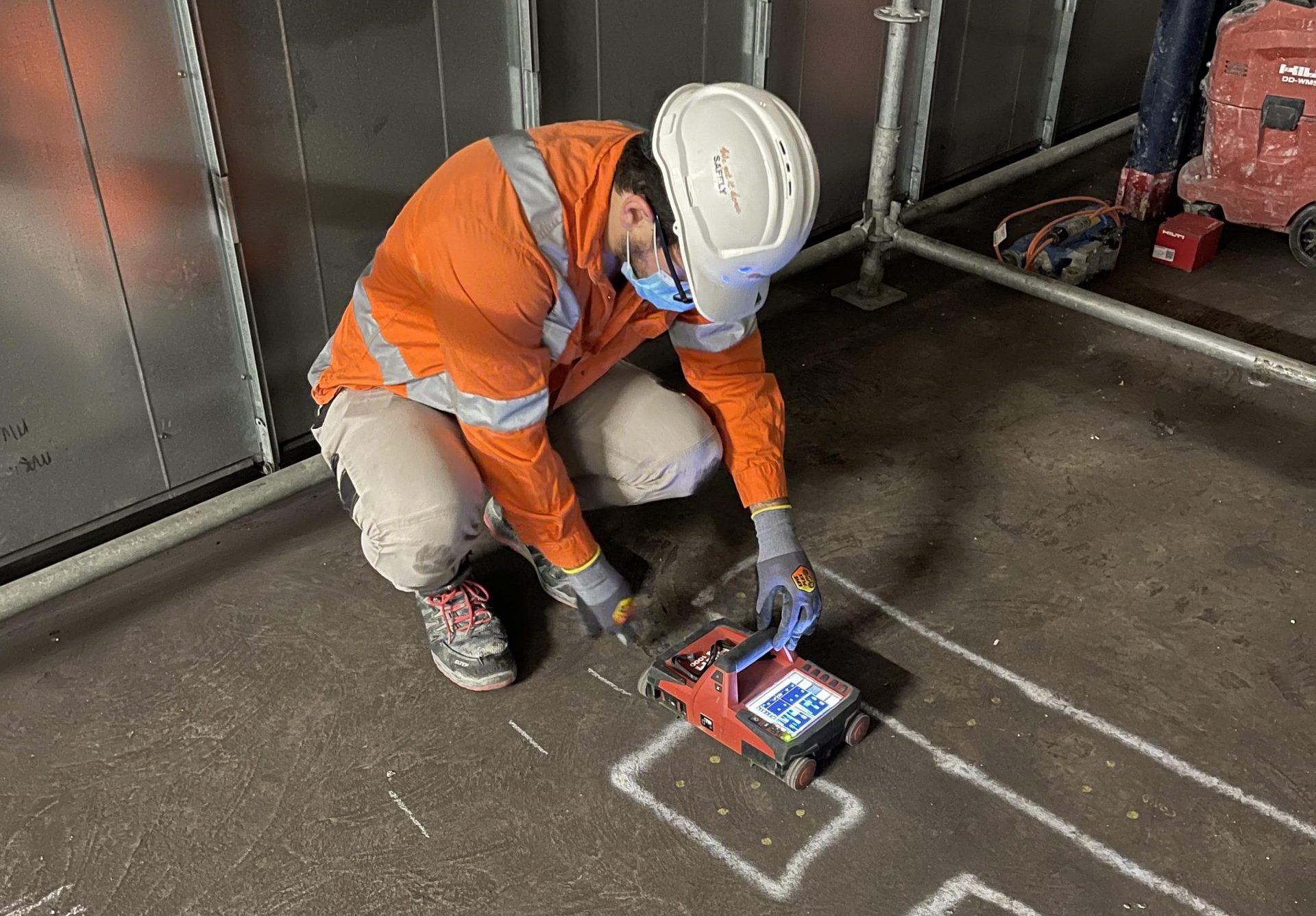Concrete Scanning: An Essential Step In The Direction Of Guaranteeing Structural Stability and Safety
In the realm of building and construction and infrastructure upkeep, the value of concrete scanning can not be overemphasized. By employing innovative technology and techniques, concrete scanning serves as an essential device in making sure that the stability and safety and security of buildings and bridges are maintained to the highest requirements.
Value of Concrete Scanning
Concrete scanning plays a critical function in ensuring the structural honesty and safety of structures and facilities jobs. By using sophisticated modern technologies such as ground-penetrating radar (GPR) and electro-magnetic induction, specialists can non-destructively evaluate concrete structures to spot prospective issues, gaps, embedded objects, and support design. This process makes it possible for very early detection of abnormalities that could jeopardize the security of a structure, protecting against pricey problems and ensuring the safety and security of owners.
Before boring, cutting, or coring into concrete, scanning aids identify the precise places of rebar, post-tension cable televisions, and various other ingrained elements, minimizing the risk of unexpected hits that might lead to structural weaknesses. Furthermore, concrete scanning aids in top quality control by validating the thickness of concrete covers and spotting any type of inconsistencies that might affect the total resilience of the structure.
Technology for Concrete Examination

Advantages of Early Discovery
Timely detection of architectural issues can significantly minimize dangers and ensure the longevity of construction tasks. By recognizing possible problems at an early stage in the construction process, stakeholders can take aggressive measures to address issues before they escalate into bigger and extra costly issues. One of the key advantages of very early detection is the prevention of structural failings, which can position significant safety hazards and lead to task delays and economic losses.
Additionally, early detection enables prompt repair work and maintenance, which can assist prolong the life expectancy of the framework. By attending to problems promptly, building teams can prevent pricey repair work or also the requirement for early substitute of structural elements. This positive method not only conserves money and time however also boosts the overall safety and sturdiness of the construction project.
Additionally, early discovery can enhance task preparation and decision-making by supplying stakeholders with useful understandings into the problem of the framework. Equipped with this details, job managers can make educated choices concerning building and construction approaches, products, and timelines, bring about a click over here lot more effective and reliable job end results.
Ensuring Structural Stability
Guaranteeing the architectural stability of a this post construction task is extremely important to its security and durability. Concrete scanning plays a crucial function in making certain architectural security by detecting prospective issues such as spaces, delamination, or reinforcement corrosion that can compromise the honesty of the structure over time.
By utilizing sophisticated scanning modern technologies like ground-penetrating radar (GPR) and electromagnetic induction, building and construction specialists can non-invasively check concrete frameworks to determine locations of problem underneath the surface area. This aggressive approach permits the very early detection of defects or weak points, enabling timely fixings or support to avoid architectural failings.
Regular concrete scanning throughout various building and construction stages and throughout the life cycle of a structure can aid keep its security, reduce threats, and guarantee the safety of passengers. By focusing on architectural stability through concrete scanning, building jobs can improve their strength and durability, ultimately adding to greater safety and security and durability.
Protecting Against Vital Failures
Applying routine assessments, such as concrete scanning, can reveal concealed flaws like gaps, cracks, or corrosion that can jeopardize the honesty of a framework. By making use of sophisticated scanning modern technologies like Ground Penetrating Radar (GPR) or Concrete X-ray, engineers can non-destructively assess the condition of concrete and recognize weak factors that need support or repair.

Verdict
To conclude, concrete scanning plays a vital duty in making sure structural integrity and safety and security by utilizing advanced technology for early detection of potential issues. This positive strategy helps prevent crucial failings and makes certain the stability of frameworks. It is vital to prioritize concrete examination as a standard method to shield the long life and safety and security of structures and facilities.
Concrete scanning plays an important duty in guaranteeing the structural integrity and security of buildings and framework projects. Additionally, concrete scanning help in quality control by confirming the density of concrete covers and identifying any kind of inconsistencies that may affect the total longevity of the framework. Concrete scanning plays a critical function in ensuring architectural security by discovering possible problems such as voids, delamination, or support deterioration that can endanger the integrity of the framework over time.

In verdict, concrete scanning plays a critical duty in making sure architectural honesty and safety by making use of innovative innovation for early discovery of prospective issues.